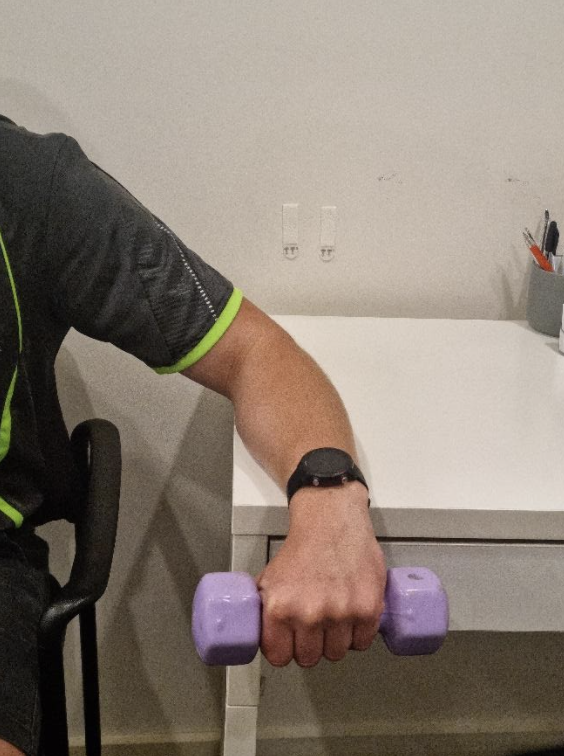#4: Lateral elbow pain.
Case series discussion: #4: Lateral elbow pain.
Miss T is a 42-year-old lady who presented to Physio and Fitness clinic for opinion and management of non-traumatic and gradual onset right sided lateral elbow pain for 9-weeks, aggravated with a range of gripping activities. This included light gripping, such as opening doors, and lifting a 2L bottle of milk. Pain settled with rest, immediately following aggravating activity if mild or up to 10 minutes if vigorous. Miss T had been routinely participating in social tennis competition twice weekly prior to symptom onset, however she had to cease this due to pain. Miss T reported pain also referred down the dorsal aspect of the forearm to the wrist crease.
Subjective assessment indicated lateral elbow tendinopathy (‘tennis elbow’) was the most likely diagnosis, although Cx/Tx radiculopathy had to first be ruled out. Neck active range of motion was regular and non-symptomatic, and Miss T denied current or recent Cx/Tx pain or stiffness. Palpation of right sided Cx/Tx facet joints didn’t reproduce symptoms. She also denied symptoms proximal to the elbow. Pain was reproduced with palpation of the lateral elbow epicondyle, and tenderness was also present on palpation of the extensor carpi radialis and extensor digitorum muscle bellies. Force produced with gripping and wrist extension (resisted) was limited by pain. Based on objective findings, lateral elbow tendinopathy was confirmed.
Initial management included prescription of resistance exercise, guided by pain tolerance. Activity was acceptable so long as pain during the task was <4/10, and not aggravated for a sustained period of time after. Wrist extension exercise with only body weight was not tolerated (>4/10 pain) while in an extended elbow position, however when this activity was trialled in a non-compressive position with the elbow flexed to ~70 degrees it was tolerable with 2Kg resistance (figure one). With this weight, Miss T fatigued at 6 repetitions, so 4×6 reps were prescribed daily. Maximal isometric grip strength (of a dumbbell handle) was also tolerated in the same position, so this was also prescribed (4xduration to fatigue).

Figure one: Example of wrist extension exercise with elbow flexion.
After two weeks, Miss T reported pain with gripping had improved with lighter activities, and her strength had improved with both home exercises (>10 reps to fatigue with 2Kg wrist extension). The 2Kg wrist extension exercise was progressed to 3Kg as this induced fatigue within strength/hypertrophy rep range, and remained suitable for pain response. Miss T was encouraged to continue these progressions independently, increasing resistance of the exercise when fatigue >10 reps, providing pain was appropriate with the increased resistance. She was also encouraged to slowly re-uptake daily activities that she had been avoiding due to pain, with the same pain guided criteria as that applied to home exercises.
After a further four weeks, Miss T had progressed to 5kg wrist extension, and reported no pain with ADL gripping activities. She also tolerated moderate intensity tennis activity for <30 minutes before requiring.
Discussion:
A number of differential diagnoses can be made for lateral elbow tendinopathy. Subjective history and astute physical examination can be used to exclude these. For example, pain radiating beyond the wrist crease to the hand is less typical of lateral elbow tendinopathy, and suggests carpal tunnel syndrome may instead be responsible (Coombes, Bisset & Vicenzino, 2015).
Recommended management of lateral elbow tendinopathy includes exercise rehabilitation, as this has been shown to result in the most timely and largest magnitude improvement to pain (Coombes, Bisset & Vicenzino, 2015). Adjunct therapeutic modalities and pharmacotherapy may also be beneficial; however, these should not be considered suitable primary interventions.
